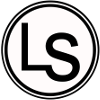
OPTIMUS LEARNING SCHOOL
INQUIRY FORM

An introduction to the concept of logic and objects that governs most of computer science. Usually catered to younger students, this fun and easy way of programming allows anyone to perform complex tasks usually reserved to more advanced languages. Almost all block programming software utilizes easy to understand interfaces with drag and drop simplicity—perfect for anyone seeking a good introduction to programming.
A relatively new programming language designed for beginning programmers and seasoned veterans alike. Python is a powerful fully-fledged computer language capable of anything from simple calculators to complex cloud-based databases. Python was invented with one thing in mind—readability. It is very easy to understand with most of its syntax written in plain English. Straightforward and streamlined, Python is an excellent programming language for all ages.
Some students can choose to have a multi concentration of hardware and software but the majority of beginners will require some practice with hardware design. This course will demonstrate how to write software to control interactive hardware with real world uses. It will also touch on basic circuit design which includes AC/DC power, resistors, capacitors, and LEDs.
Two of the most widely used programming languages. Both based on the industry standard C programming language, C++ and Java utilizes efficient and powerful data control that makes many modern technologies possible. Java’s flexibility allows it to run on most devices including smart phones, while C++ remains to be excellent choice for someone who needs fast and efficient programs. Student seeking to learn these languages will be presented with great challenges but the results are well worth the trouble.
This course goes in-depth with databases and search methods. Students will learn how to construct databases using advanced concepts such as nodes, switches, and queues. Students can choose Java, C++, or Python but a strong background in programming is required to fully understand this course. Students who complete this course can move on to basic software and mobile application design complete with graphical user interfaces (GUI).